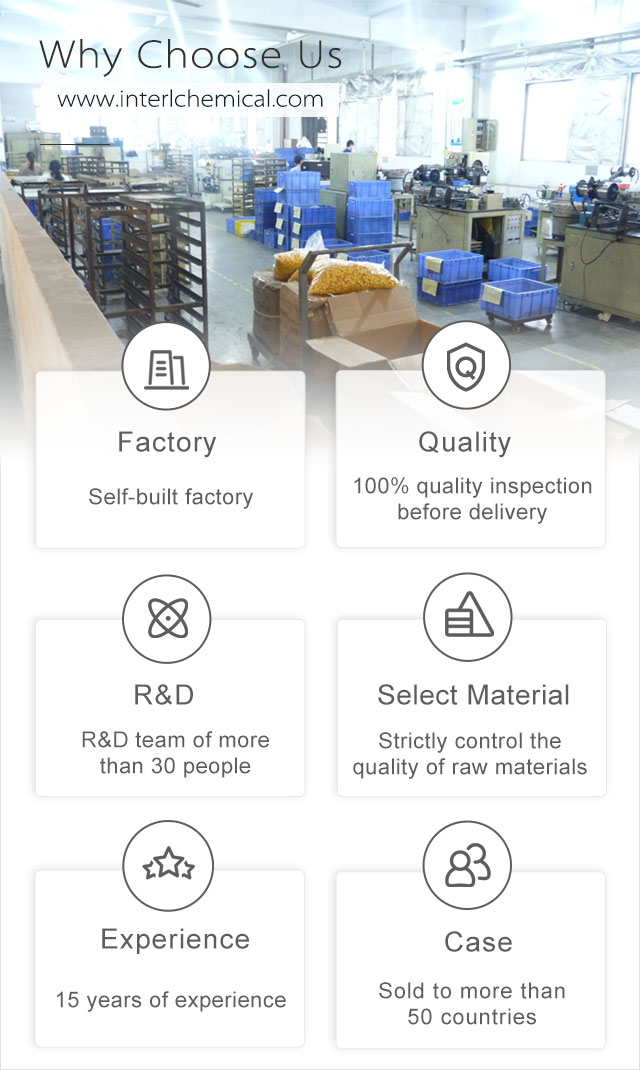Factory Supply Ethyl Acrylate Liquid CAS 140-88-5 Raw Materials
Related Attributes
Product details
Uses and synthesis of Ethyl Acrylate Liquid
Ethyl Acrylate Raw Materials Colorless transparent liquid with pungent odor. Density 0.9405g/cm3, freezing point -72℃. Boiling point 99.8℃. Flash point 15.56℃(open cup). Refractive index Pal 1.404, soluble in water, ethanol, ether.

Ethyl Acrylate Raw Materials is the preparation of carbamate insecticide propylthiocarbamate intermediate, it can also be used as protective coatings, adhesives and paper impregnation agent raw materials, Ethyl Acrylate Liquid polymer can be used as leather anti-cracking agent, and the copolymer of ethylene is a kind of hot-melting adhesive, Ethyl Acrylate Liquid and 5% of the copolymer is a kind of hot-melting adhesive, Ethyl Acrylate Liquid and 5% of the copolymer is a kind of hot-melting adhesive. The copolymer of Ethyl Acrylate Liquid and 5% chloroethyl vinyl ether is a kind of synthetic rubber with good oil and heat resistance, which can replace nitrile rubber in some cases.

Applications / Functions of Ethyl Acrylate Liquid
- Ethyl Acrylate Liquid is a monomer for polymer synthesis materials. And used in the manufacture of coatings, adhesives, leather processing agents, textile auxiliaries, paint additives and so on. Copolymer with ethylene is a hot-melt adhesive; copolymer with 5% chloroethyl vinyl ether is a kind of oil-resistant, heat-resistant synthetic rubber, in some cases can replace nitrile rubber.
- Ethyl Acrylate Raw Materials are mainly used as copolymerization monomers for synthetic resins, and the copolymers formed are widely used in coatings, textiles, leather, adhesives and other industries.
- Ethyl Acrylate CAS 140-88-5 is the intermediate for the preparation of carbamate insecticide propylthiocarbamate, Ethyl Acrylate Liquid can also be used as the raw material of protective coatings, adhesives and paper impregnating agents, and its polymers can be used as the anticracking agent of leather, and the copolymer with ethylene is a kind of hot-melting adhesive, Ethyl Acrylate Liquid and 5% chloroethylene copolymer is a kind of hot-melting adhesive. The copolymer of Ethyl Acrylate Liquid and 5% chloroethyl vinyl ether is a kind of synthetic rubber with good oil and heat resistance, which can replace nitrile rubber in some cases.
- Ethyl Acrylate Liquid is permitted as an edible flavor. It is primarily used in the formulation of rum, pineapple and mixed fruit type flavors.
- Ethyl Acrylate Liquid monomer for polymer synthesis materials. And used in the manufacture of coatings, adhesives, leather processing treatments, textile auxiliaries, paint additives, etc. Ethyl Acrylate CAS 140-88-5 copolymer with ethylene is a hot-melt adhesive; and 5% chloroethyl vinyl ether copolymer is a kind of oil-resistant, heat-resistant good performance of synthetic rubber, in some cases can be replaced by nitrile rubber.
- Ethyl Acrylate CAS 140-88-5 polymerizable monomer for medium soft flexible polymers.
- Ethyl Acrylate Liquid organic synthesis. For the production of coatings, textiles, leather, adhesives and other industrial resins.
Ethyl Acrylate Liquid properties and stability
Ethyl Acrylate Liquid colorless liquid, volatile. Miscible with ethanol, ether, soluble in chloroform, slightly soluble in water.

Ethyl Acrylate Liquid is flammable, its vapor and air can form explosive mixtures, can cause combustion and explosion when exposed to fire and high heat. It can react strongly with oxidizing agent, Ethyl Acrylate CAS 140-88-5 vapor is heavier than air, it can diffuse to far away place in low place, it will catch fire when it meets ignition source. It is easy to self-polymerize, and the polymerization reaction increases sharply with the rise of temperature. Temperature over 20 ℃, can polymerization heat accumulation, causing an explosion.
Production method of Ethyl Acrylate Liquid
There are six production methods of Ethyl Acrylate CAS 140-88-5: ethylene cyanohydrin method; high-pressure Reppe method; improved Reppe method; β-propiolactone method (Goodrich method); hydrolysis of acrylonitrile and alcohol; propylene oxidation method. Nowadays, acrylonitrile method, β-propiolactone method, acetylene-based Reppe method and propylene oxidation method are the most widely used production methods. Among them, the propylene oxidation method is the most adopted method.
- 1. Acrylonitrile methodThis method is actually the development of early cyanoethanol method, the first step is to generate acrylamide sulfate by heating and hydrolyzing acrylonitrile with sulfuric acid, and the second step is to esterify it with alcohol to generate the corresponding acrylic ester, with the by-production of ammonium bisulfate.
- 2.β-Propiolactone methodVinyl ketone and anhydrous formaldehyde in the presence of aluminum trichloride, at 25 ℃ for the gas-phase reaction into β-propanolactone, can not be purified, directly with alcohol and sulfuric acid reaction, the generation of the corresponding acrylate. This method of high purity products, by-products and end of the reaction of the material can be recycled, high yield, simple reaction conditions, suitable for continuous production, but the raw material cost is higher.
- 3. Acetylene as raw material Raper methodDuring the Second World War, Leiper found that there are two ways to make acetylene, carbon monoxide and water or alcohol reaction to generate acrylic acid or acrylate. One is called the stoichiometric method and the other is called the catalytic method. These two methods due to the toxicity of nickel carbonyl, nickel consumption and the danger of acetylene at high temperatures and other factors, the industrialization of the existence of great difficulties.
- 4. Propylene direct oxidation methodPropylene is first oxidized to acrolein, and then further oxidized to acrylic acid. Production of acrylic esters from acrylic acid is to acrylic acid and the corresponding alcohol in the presence of ion exchange resin catalysts, in the boiling temperature of the continuous esterification reaction.
Why choose us?

HRK Factory

About Shipping












